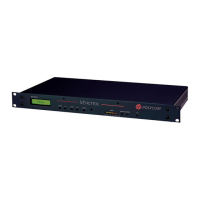3.4. Macros and Presets
Although macros and presets are similar, there are times when using one is better than the other.
Presets store the absolute values of all of the non-global settings of the device. This includes, but is
not limited to, input and output gain settings, matrix settings, algorithm settings, parametric EQ
settings, and automixer settings. See
Section 7 for a list showing all the commands and which are
saved to presets.
Presets should be used when you really want to change all the settings in a device. One example
would be when you want to have one unit be able to control different rooms. In this case, having a
preset for each different room is the easiest solution.
Macros are like mini-presets. You can define them to change only the settings you are interested in.
One advantage of macros over presets is that macros can make relative changes in addition to
absolute changes. An absolute change is something like "set the input gain to -3 dB". A relative
change is something like "raise the input gain by 3 dB". One example of using macros for a relative
change is stereo volume ramping. If you have two outputs setup to have left and right program audio,
then you could build a macro that contains two commands: one to increment the left channel by 1 dB
and the other to increment the right channel by 1 dB. Then, by calling that macro, you can ramp the
stereo outputs. A similar thing can be done with decreasing the volume.
Another thing to consider when using macros and presets is to use the
MACROQ and PRESETQ
commands instead of the
MACROX and PRESETX commands. Both the Q and X versions execute the
macro or preset, but the X versions produce acknowledgements for the settings that change, while
the Q versions don't. If your control system updates its status by looking at the acknowledgements
that come back, then you'll probably want to use the X versions. Another option would be to use the Q
versions and then manually query the values you're interested in. If your control system does not
need use acknowledgements, or if you are manually querying the values you're interested in, using
the Q versions is better since it doesn't generate acknowledgements and thus reduces RS-232 traffic.
4. Command Structure
A Vortex command consists of a series of ASCII characters with the following structure.
Description Number of Characters Range of Values
Device Type 1
0-9, A-Z, *
Device ID 2
0-9, *
Command Name 1-7
0-9, A-Z
Command Data 0-64 ASCII characters
Command Terminator 1
^M (ASCII 13)
4.1. Device Type

